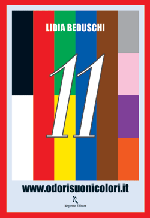Didactic allegations
Let us go back to Asher Lev:
"A Sunday afternoon, I brought my pencil and sketch book in the lounge, and drew my mother sitting on the couch. I sketched the sagging curve of her shoulders and back, the flat breast, the bony twigs of the arms crossed in her lap, the head bent on the shoulder, and the sunlight right in her eyes. She did not look like the sun bothered her. It was as though there was nothing behind her eyes to bother. I could not portray her face. Her right cheek sank abruptly from her tall cheekbone, making a hollow.
I could not get the pencil shading right. I tried it once. Nothing. I rubbed it out. I tried again, and again I rubbed it out, but the drawing was blotched, and the lines thinned in places. I put it aside, and, on a fresh piece of paper, I sketched again the silhouette of my mother's body, and the outline of her arms. I left the face blank for a moment, and then I added the eyes, nose and mouth. I did not want to use the pencil again. The drawing looked unfinished. It bothered me to leave it unfinished. I closed my eyes, and watched the drawing within me, I went along the outlines again, and it was unfinished. I opened my eyes. Out of the corner of my eye, I saw the ashtray. It was filled with stubs of the cigarettes my mother had smoked. I looked at the dark, squashed stubs. I noiselessly went for the ashtray, took it to my chair, put it on the floor. Then, holding the sketch book with the drawing in my lap, and with the utmost care, I rubbed a cigarette's burned end on my mother's face. The ash left an ugly smear. I rubbed at the stain with my small finger. It spread easily, leaving a gray coating. I used the ash from another cigarette. The gray coating became thicker. I worked on. I used the ash on the portion of the shoulder that was not under the light and on the folds of the dressing gown. The outlines of her body started to come alive." (p.81)
Asher Lev does not just reproduce reality: he changes it, brings it to life, forcing it to match the pattern set up by his inner self. Nowadays, children do not trust enough their potential to creatively shape reality, and this low level of self-esteem brings them to read objects little better than by snap-shots. A synesthetic color code, by triggering possible links between sensations of different orders, would allow them to seek for hidden meaning beyond face value: the code could teach children to watch, instead of just looking. This tool would help children to describe the world around them in personal, special, and meaningful ways, bringing to light each child's subjective traits and inspiring explorations of original language. I could go as far as to say that it would even encourage mutual tolerance, since there would be no longer a reason to claim that any one perception of red matches reality more than others. I am told that, in acting schools, students practice an exercise called "the color of the voice": they modulate their voice's tonality to express different colors. Exercises like this promote a mutual enhancement of the senses, and help to overcome that pre-eminence of sight that nowadays often becomes a lack of reality, replaced by a virtual world, whose insubstantiality is erroneously taken to be safe from pain.
As for the visually impaired, the synesthetic color code makes for a fascinating and meaningful integration tool. It brings together two worlds still kept apart by preconceptions and prejudice that are sometimes undeclared, often unconscious, always hard to beat. The code helps to understand how the non-physical, cultural nature of colors can be shared, because it comes of a common ground of emotions, feelings, and experiences.
The code encourages the visually impaired, who must deal with colors in daily life, to feel free to speak about them even if they cannot perceive them, to get to know them, to make friends with them, to incorporate them into familiar spheres of perception. The synesthetic color code should be taught to blind preschoolers, so that it can merge with their cognitive background, and later shape itself, by absorbing through the years further elements, and affinity criteria born of personal exploration.
This way, both the blind and normally sighted can open their eyes on a whole palette of colors: and it will be with the eye of their mind that they can see and observe infinity.
- Printer-friendly version
- Login to post comments
 Italiano
Italiano


